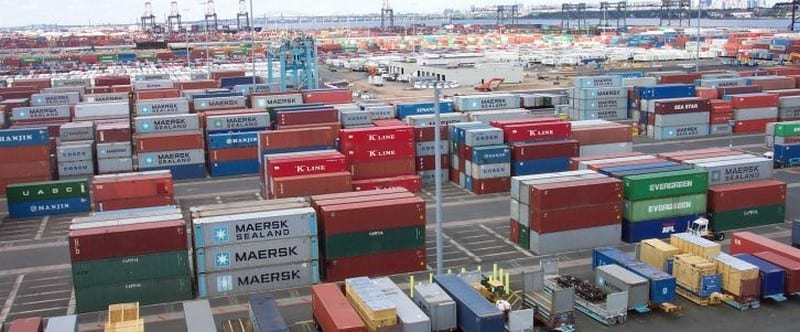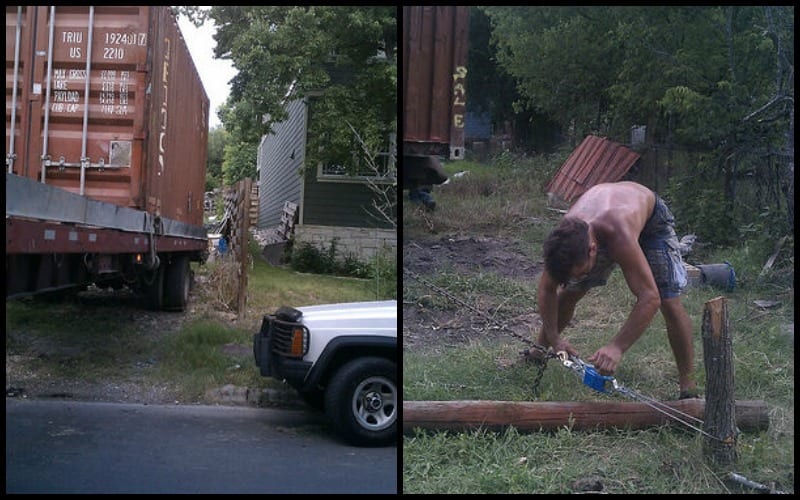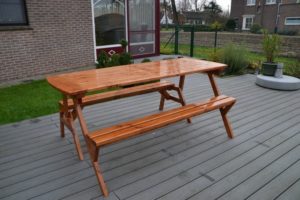Last Updated on September 21, 2022 by teamobn
I like Sketchup for doing this: it’s free, integrates with google earth, and there’s already a model of a shipping container for you to adapt.

There’s the easy way, the hard way, and 2 tricks:
- The easy way: Google “shipping containers for sale” and buy one via a nationwide broker, eBay, or a local reseller. Expect to pay at least $1,900+ for a 20′ and $2300+ for a 40′, delivered .
- Hard way: figure out how to buy abandoned/damaged containers directly from a shipyard. I researched this a bit but stopped after hearing of a probable requirement for a commercial driver’s license. If you figure this out, please comment and let me know.
- Trick #1: Search for conex on craigslist instead of a shipping container. This is another term for the same thing, but plenty of people don’t know to search for it. Some container sellers, like the guy I bought mine from, show up if you search for conex but not if you search for shipping containers.
- Trick #2: if buying from a dealer, be clear that you don’t need a cargo-worthy container, just one that’s watertight. Cargo-worthy often refers to whether the metal channels on the bottom are straight to within an inch or something excessive; this is important for container-moving machinery but probably doesn’t matter to you. Before realizing this, I was quoted prices $300+ higher.
Some places also offer a rent-to-own option, but you’ll pay substantially for it. The cheapest I found was over 20%, and they might not be happy to find you customizing their container before you’re done paying for it:)
In mid-2010, I paid $1,300 for my 20’x8’x8.5′ container including delivery to my yard in East Austin, and I consider this an exceptionally good price. Please comment if you find a replicable way to get them as cheap or cheaper.
Prices are this low in the U.S. because of our trade deficit: we export far less stuff than we import, and it’s costly to ship back an empty container. Of course, these prices are also volatile with the price of the steel they’re made from.

If you’re having it delivered to your location, have your site clear and then clear it some more: no joke, the guy who delivered mine banged into my fence as well as my neighbour’s before bumping a rafter of the house!
If you’re smart, congratulations: you’ve already got a slab or some easy foundation set up and can just have your new building dropped off perfectly. If you’re like me, you haven’t planned enough and will want to quickly scrounge some thick round material (think telephone poles) to set the container on for easier future adjustments. I used ~6″ diameter round wood poles.
If you’re going to fully move this trailer yourself or want to keep it portable, you’re going to be entering the world of flatbed trailers. 16′ utility flatbeds might be a feasible option for 20-footers, and they appear to be widely available on craigslist for ~$1,200. There are also DIY kits for the braver and old car parts for the truly hardcore.
Winches, come-along, and any other mechanical helpers will be your best friends during this process and later adjustments. Ideally, anchor to something much stronger than this tree stump and use the strongest electric winch you can get your hands on.

While I’ve done little to convert the container since getting it into my yard about a year ago, it has made a great rooftop deck, garage, and conversation piece.
By following the simple steps stated here you are one step ahead of getting your own shipping container. The information above keeps you from committing unnecessary and costly mistakes.








